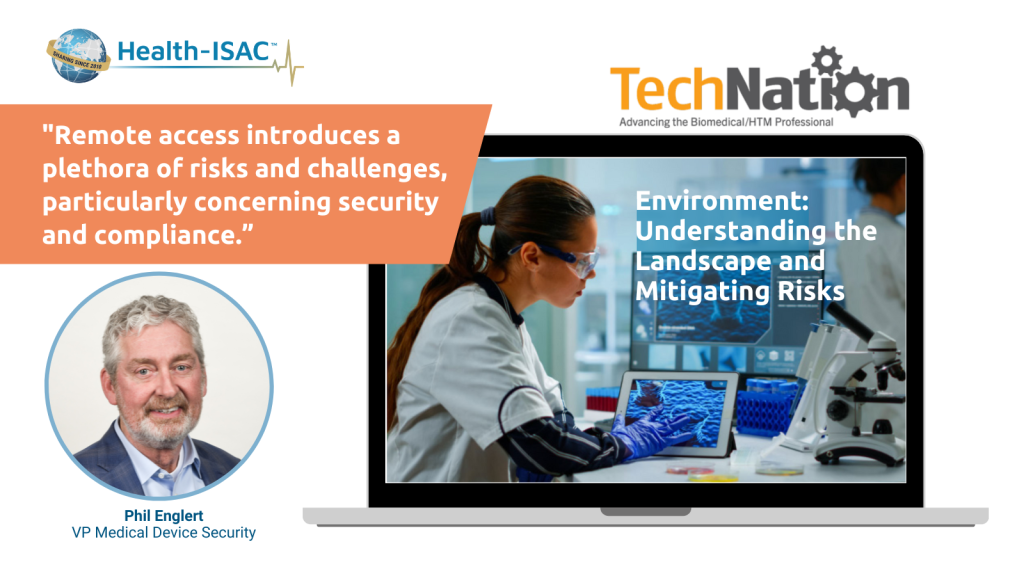Health-ISAC Medical Device Security Blog – April, 2024

Remote Access into the Medical Device Environment
Understanding the Landscape and Mitigating Risks
Access the full blog TechNation by Phil Englert, Health-ISAC’s VP of Medical Device Security Here:
April 1, 2024
Remote access in the health care and medical device environment refers to the capability of accessing and managing medical systems, devices and data from a location outside of the physical premises. As more and more medical device types become interoperable, the desire by manufacturers to leverage remote access to improve reliability, reduce costs and enhance customer service has become commonplace.
This ecosystem of services encompasses various functionalities such as remote software updates, diagnosis, repair, assistance, training, proactive monitoring and predictive maintenance. However, remote access also introduces a plethora of risks and challenges, particularly concerning security and compliance.
One of the primary challenges associated with remote access is the lack of established protocols and standards. With numerous means and methods utilized for remote access, there is a pressing need for comprehensive policies to govern these activities and control ad-hoc methods effectively. Additionally, unsecured networks pose significant threats, potentially allowing malicious actors to infiltrate the health care provider’s infrastructure and the remote technician’s system.
Continue reading the blog here:
- Related Resources & News
- Potential Terror Threat Targeted at Health Sector – AHA & Health-ISAC Joint Threat Bulletin
- New Cybersecurity Policies Could Protect Patient Health Data
- CyberWire Podcast: PHP flaw sparks global attack wave
- Health-ISAC Hacking Healthcare 3-14-2025
- HSCC Aiming to Identify Healthcare Workflow Chokepoints
- New Healthcare Security Benchmark Highlights Key Investment Priorities and Risks
- Are Efforts to Help Secure Rural Hospitals Doing Any Good?
- CISA cuts $10 million annually from ISAC funding for states amid wider cyber cuts
- 2024 Health-ISAC Discussion Based Exercise Series After-Action Report
- Cobalt Strike takedown effort cuts cracked versions by 80%
